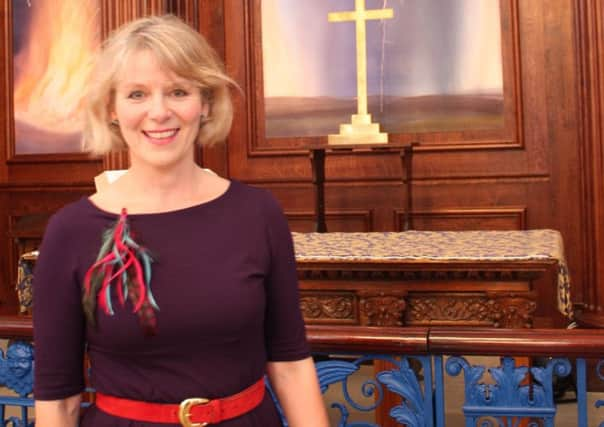Rebecca Hind, royal artist


The daughter of the late Canon Stanley Hind, she worked predominantly with paint, her large-scale watercolours pushing the technical boundaries of the medium, offering a visual and contemplative intensity.
Paintings for ecclesiastical buildings had become an increasingly significant part of her life, and the depth of her work is exemplified in Scintilla: the glittering speck, an ornamental screen covering the wall at the back of the altar at Christ Church in London’s Spitalfields. It followed a series of lunar paintings made for a solo exhibition at the Museum of the History of Science, Oxford.
Advertisement
Hide AdAdvertisement
Hide AdShe was born in Elland, near Halifax, where her parents had settled in the late 1950s. Her father, after serving as senior curate at St Mary’s Church and priest-in-charge of All Saints, had become in 1960 the vicar of St Paul’s, Eastthorpe, in Mirfield. The family later moved to St Michael’s Church at Carleton, near Pontefract, where Rebecca attended junior school. Later she moved to Pontefract and District Girls’ High School, and then on to Bradford University’s Art School.
In 1979, a year after the Rev. Hind became Rector of Morley and Cherwell in Leeds, Rebecca married fellow artist and Bradford graduate, Kevin Slingsby. The renowned abstract artist Stuart Dawson, who died in 2013, was best man.
Kevin took a teaching post at Cardiff University Art College, but when Oxford University’s John Ruskin Art School advertised for someone who could practice the almost extinct skill of stone lithography, he was appointed.
In their new home of Dorchester-on-Thames, Rebecca launched her own adult art classes, ran a summer school and was warden of her local church.
Advertisement
Hide AdAdvertisement
Hide AdShe appeared frequently on TV and radio, discussing art in relation to spirituality, and she chaired the Kevin Slingsby Prize for Funnel Vision at the Ruskin School of Art at Oxford, where she was also a visiting tutor.
While nursing Kevin, who was by then suffering from incurable motor neurone disease, she received word that Prince Charles, who had taken an interest in the Dorchester Festival, would like to visit an exhibition of hers. A keen amateur painter, the prince recognised her skilful use of a sharp, thin blade to erase blue paint on the paper to create a flock of white gulls in a sky. “Brave”, he called it.
The royal connection continued into 2002, when, as part of the Queen’s Golden Jubilee celebrations, a presentation was made in the Banqueting Hall at Whitehall, and officials decided that rather record it on camera, it should be the subject of paintings by Rebecca. These, they felt, would be more in keeping with the singing, dancing and reading of biblical passages.
While her children arrived from university to care for their father, she sketched each participant and made colour swatches for presentation to the Queen, who selected the ones she liked best.
Advertisement
Hide AdAdvertisement
Hide AdThey were then offered to the heads of state of the countries that had taken part, and they now hang in palaces and government offices worldwide. Rebecca’s last few years were difficult. Her father’s death was followed, two years ago, by the loss of Kevin. Her brother, Martin, died of cancer at the same time she received her own, similar, diagnosis. Her funeral at Dorchester Abbey was attended by hundreds.
She is survived by her mother, Catharine Ann Hind, son Thomas Luke, daughter Rachel Holly, and grandson Emiliano Luke.